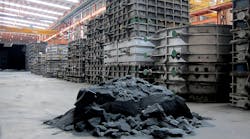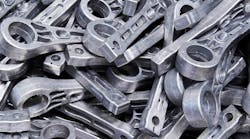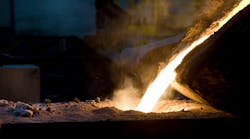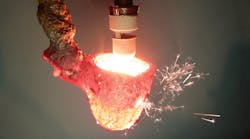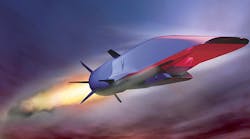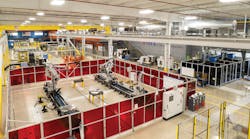Specialty truck builder Oshkosh Corp. reports it will be part of a National Institute of Standards and Technology joint-development team to research and develop, and produce, lighter aluminum and magnesium castings “that will have the strength of cast steel, for commercial production.”
NIST is a division of the U.S. Dept. of Commerce Its Technology Innovation Program (TIP) is funded at nearly $5 million over five years, with the team providing in-kind contribution of engineering resources, bringing the project’s total value to approximately $10 million.
Other members of the research team include Eck Industries Inc., a Manitowoc, WI, aluminum foundry; Nanostructured & Amorphous Materials Inc., of Houston; and the Wisconsin Alumni Research Foundation (WARF) of Madison, WI.
Wisconsin-based Oshkosh stated that NIST’s funding will allow it (and its partners) to explore the use of nanocomposites beyond their current use, taking their applications from simple molded parts into larger, complex metal castings. “The work will expand on laboratory tests conducted by the team’s project leader, the University of Wisconsin-Madison,” Oshkosh explained.
Recently, NIST allocated $71 million to 20 different projects it identifies as “innovative, high-risk research in new technologies that address critical national needs,” and involving various emerging manufacturing concepts. Its grant to an interdisciplinary team of researchers led by University of Wisconsin-Madison mechanical engineering professor Xiaochun Li was reported to total $10.1-million over five years.
Due to their microscopically small size, nanoparticles are difficult to disperse homogeneously throughout a casting. The research aims to develop a casting technology that allows light metals to be strengthened with nanoparticles in large-scale production.
“The NIST’s TIP awards are not just an honor to receive, but proof of Oshkosh’s position at the cutting edge of manufacturing technology and innovation,” stated Donald H. Verhoff, Oshkosh Corporation executive vice president of technology. “Staying at the forefront of technological innovation allows us to better serve our customers and to compete in the global marketplace.”
Oshkosh expressed confidence that the research will benefit defense and commercial truck manufacturing, and “enable transformative changes in multiple industries, directly address the critical national needs of reducing oil dependency, lower greenhouse gas emissions and help maintain U.S. leadership in manufacturing.”
Latest from Materials
Latest from Materials
Melt/Pour
Modeling Aluminum Oxidation
Feb. 27, 2024
Materials
Quiz: Know the Metals!
Aug. 29, 2023
Issues and Ideas
OSHA Cites Schumann for Blast
Aug. 22, 2023
Melt/Pour
Reducing Alloying, Improving Castability
July 17, 2023
Materials
SinterCast CGI Volume Hits a New High
July 11, 2023
Issues and Ideas
LIFT, DoD Renew Co-Op
May 17, 2023

